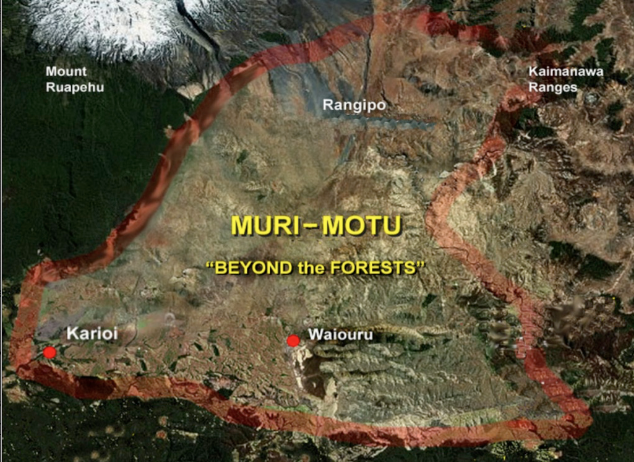

public profile

Great voyager (Smith, 1893).
"He [Whiro] and his family sailed to Aotearoa and landed on Ōakura beach..." (Folksong [macron added], n.d.).
Paerangi o te Maungaroa was the descendant of... ...Mōuruuru, Whirotupua, and Houmea (Bennion, 1994; Waitangi Tribunal, 2015).
Tangiia adopted Whiro's son Tai-te-ariki [whom remained in Aotearoa (New Zealand)] and renamed him Te Ariki-upoko-tini (Hongi, 1912; Kloosterman, 1976).
"...Iro returned to his home, and there asked his mother, Aki-mano, "Who is my father?" She replied, "Pou-ariki!" He then said, "Why Pou-ariki says that Moe-tara-uri is my father," to which his mother replied, "That is so!" (Te Ariki-tara-are, 1920).
"...[named]...Iro-ma-oata... ...in remembrance of the nights of the moon I [Moe-tara-uri] was with thee [Aki-mano]... named Iro..." (Smith, 1899).
"...never revered as a god..." (Savage, 1916).
"Takitumu [I] was the name of Tangiia's canoe and this name was applied both to the tribe which traces its descent from men who travelled to Rarotonga in that canoe, ..." (Crocombe, 1961).
"Ngā Turi o Murimotu, dominates the Karioi landscape [Ruapehu] where the descendants of Whiro Te Tupua first settled." (Waitangi Tribunal, 2015).
(Folksong, n.d.).
Note
For estimated date formula, "Polynesian scholars who know the race well, is that 25 years is nearer the truth, for the Polynesians married early, and many women come into the genealogies, who as a rule, marry very early. ...1850... ... comparing [Hawaii, Rarotonga, New Zealand] genealogical tables... ...24 generations..." [(1850-1255)=595/25=24] (Smith, 1904). Settlement began around 1230-1280 CE (Bunbury et al., 2022; Wilmshurst et al., 2010). I used: (Katarina Bell's 24th great grandparent's generations+2)x25)=650 years, subtracting -(1854 birth year+25), gave me circa 1229-1255 CE. Tangiia-nui was Whiro te tupua's contemporary [note, Whiro's mother is Tangiia's adopted sister] (Batley, 1973).
Sources
Batley, R. A. L. (1973). Ngati Rangi: Whiro's family at Murimotu, North Island, New Zealand. The Journal of the Polynesian Society, 82(04), 43-354.
https://jps.auckland.ac.nz/document/Volume_82_1973/Volume_82%2C_No....
Bennion, T. (1994, March 9). Whanganui River Report. (Waitangi Tribunal research report [Hearing] #WAI 167).
https://forms.justice.govt.nz/search/Documents/WT/wt_DOC_68450539/W...
Best, E. (1922). The legend of Whiro. The Journal of the Polynesian Society, 31(123), 111-116.
https://www.jps.auckland.ac.nz/document/Volume_31_1922/Volume_31%2C...
Bunbury, M.-M.E., Petchey, F., & Bickler, S. H. (2022). A new chronology for the Māori settlement of Aotearoa (NZ) and the potential role of climate change in demographic developments. Proceedings of the National Academy of Sciences of the United States of America., 119(46).
https://doi.org/10.1073/pnas.2207609119
Cookislandsvoyaging. (2022). Takitumu.
https://www.cookislandsvoyaging.org/our-vaka/takitumu/
Crocombe, R. G. (1961, July). Land Tenure in the Cook Islands: Takitumu: the tribe of Tangiia. Victoria University of Welllington.
https://nzetc.victoria.ac.nz/tm/scholarly/tei-CroLan-c1-2.html
Downes, T. W. (1915). Old Whanganui., 10-11. W. A. Parkinson & Co. Ltd.
Gudgeon, W. E. (2022, July 17). Item 02 - [Cook Islands Maori genealogies, collected by W. E. Gudgeon] [Manuscript]. Pacific Manuscripts Bureau.
https://asiapacific.anu.edu.au/pambu/catalogue/index.php/cook-islan...
Folksong. (n.d.). Waiouru history: Settlers from Polynesia.
https://folksong.org.nz/waiouru_history/7_polynesia/index.html
Hongi, H. (1912). Whiro and art. The Journal of the Polynesian Society, 21(2).
https://www.jps.auckland.ac.nz/document/Volume_21_1912/Volume_21%2C...
Kloosterman, A. M. J. (1976). Discoverers of the Cook Islands and the Names they Gave. Cook Islands Library and Museum.
https://nzetc.victoria.ac.nz/tm/scholarly/tei-KloDisc-t1-body-d13.html
Kokaua, T. (2017). Arera-ukarau-te-ariki-katu-ki-te-rangi-ariki-nui.
Ngāti Rangi and The Crown. (2018). Deed of settlement of historical claims. New Zealand Government.
https://www.govt.nz/assets/Documents/OTS/Ngati-Rangi/Ngati-Rangi-De...
Nicholas, H. (1892). Genealogies and historical notes from Rarotonga - Part I. The Journal of the Polynesian Society, 1(1), 20-29.
https://www.jps.auckland.ac.nz/document/Volume_1_1892/Volume_1%2C_N...
Savage, S. (1916). The period of Iro-nui-ma-oata and Tangiia-nui-ariki. The Journal of the Polynesian Society, 25(100), 138-149.
https://www.jps.auckland.ac.nz/document/Volume_25_1916/Volume_25%2C...
Smith, S. P. (1893). The genealogy of the Pomare Family of Tahiti, from the papers of the Rev. J. M. Orsmond. The Journal of the Polynesian Society, 2(1), 25-42.
https://www.jps.auckland.ac.nz/document/Volume_2_1893/Volume_2%2C_N...
Smith, S. P. (1899). Hawaiki: the whence of the Maori, being an introduction to Rarotongan history: Part III. The Journal of the Polynesian Society 8(1), 1-48.
https://www.jps.auckland.ac.nz/document/Volume_8_1899/Volume_8,_No....
Smith, S. P. (1904). Hawaiki: The original home of the maori; With a sketch of Polynesian History. Whitcombe and Tombs Limited.
https://en.wikisource.org/wiki/Hawaiki_The_Original_Home_of_the_Maori
Smith, S. P. (1910). History and traditions of the Taranaki Coast: Chapter III, Kupe the navigator. The Journal of the Polynesian Society 16(3), 155-173.
https://jps.auckland.ac.nz/document/Volume_16_1907/Volume_16,_No._3...
Te Ariki-tara-are. (1920). History and traditions of Rarotonga. Part XII and XIII. The Journal of the Polynesian Society, 29(115), 25-42.
https://www.jps.auckland.ac.nz/document/Volume_29_1920/Volume_29%2C...
Te Rei, T. (1917). Ko to Rarotonga are-korero teia no Iro-nui-ma-oata. The Journal of the Polynesian Society, 26(2), 45-65.
https://www.jps.auckland.ac.nz/document/Volume_26_1917/Volume_26,_N...
Waitangi Tribunal. (2013). Te Kāhui Maunga: The national park district inquiry report [Volume 1]. Legislation Direct, Government of New Zealand.
https://www.waitangitribunal.govt.nz/assets/WT-Vol-1-Kahui-Maunga-R...
Waitangi Tribunal. (2015). He whiritaunoka: The Whanganui land report. Legislation Direct, Government of New Zealand.
https://forms.justice.govt.nz/search/Documents/WT/wt_DOC_97551683/H...
Wilmshurst, J. M., Hunt, T. L., & Anderson, A. J. (2010). High-precision radiocarbon dating shows recent and rapid initial human colonization of East Polynesia. Proceedings of the National Academy of Sciences, 108(5), 1815-1820.
https://doi.org/10.1073/pnas.1015876108
| 1229 |
1229
|
||
| ???? | |||
| ???? | |||
| ???? | |||
| ???? | |||
| ???? | |||
| ???? | |||
| ???? | |||
| ???? |